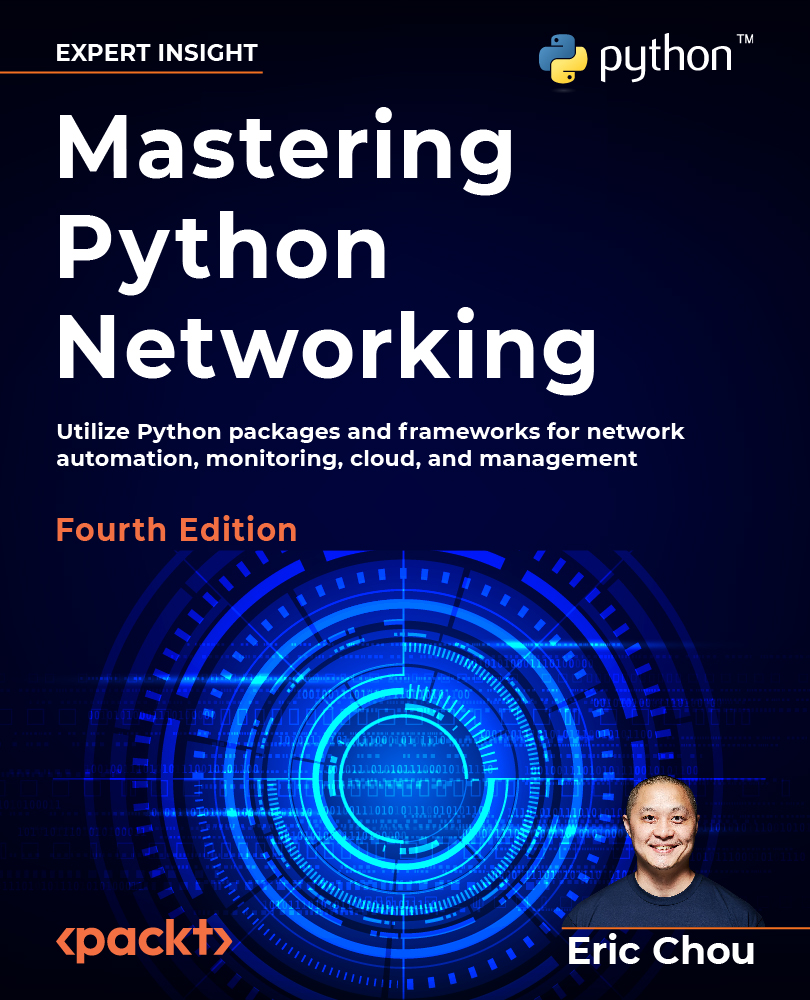Summary
In this chapter, we started to move on to the path of building RESTful APIs for our network. We looked at popular Python web frameworks, namely Django and Flask, and compared and contrasted the two. By choosing Flask, we can start small and expand on features by using Flask extensions.
In our lab, we used the virtual environment to separate the Flask installation base from our global site packages. The lab network consists of several IOSv nodes, two of which we have designated as spine routers while the other two as leaf routers. We took a tour of the basics of Flask and used the simple HTTPie client to test our API setup.
Among the different setups of Flask, we placed special emphasis on URL dispatch as well as URL variables because they are the initial logic between the requesters and our API system. We took a look at using Flask-SQLAlchemy and SQLite to store and return network elements that are static in nature. For operation tasks, we also created API endpoints...
































































